Top 10 International Shipping News Storylines of 2022

2022 is nearly over, so it’s time to look back on the year and digest what happened. Here at Universal Cargo, we like to count down the top international shipping news stories we covered from number ten to one a la David Letterman. We realize we may now have readers who don’t remember Letterman and his Top 10 List. Let me assure you, it was much funnier and more entertaining than this list.
Our list has evolved a bit over the years. It has gone from top blogs to top stories to now top storylines, as international shipping news items often tend to be ongoing things through the year (and beyond). We’re also not above reverting to most popular, most entertaining, or most viewed posts at the end of the year either. But I digress. Let’s get into the top international shipping news storylines of the year as we say goodbye to 2022…
#10 Port Fees Keep Piling Up
Just squeaking onto the list is ports implementing more fees. Because of the big international shipping news stories happening, all the new port fees of 2022 didn’t make it into Universal Cargo blog posts. Plus, it seems like shippers are always seeing new, and sometimes unfair, fees at ports. Still, port fees are impactful for U.S. importers and exporters, so the couple fees that managed to get blog posts this year manage to sneak onto the top 10 list while other fees did get mentioned in other posts, though not their own, throughout the year.
NY-NJ Port Terminal Taking Away Weekend/Holiday Free Time
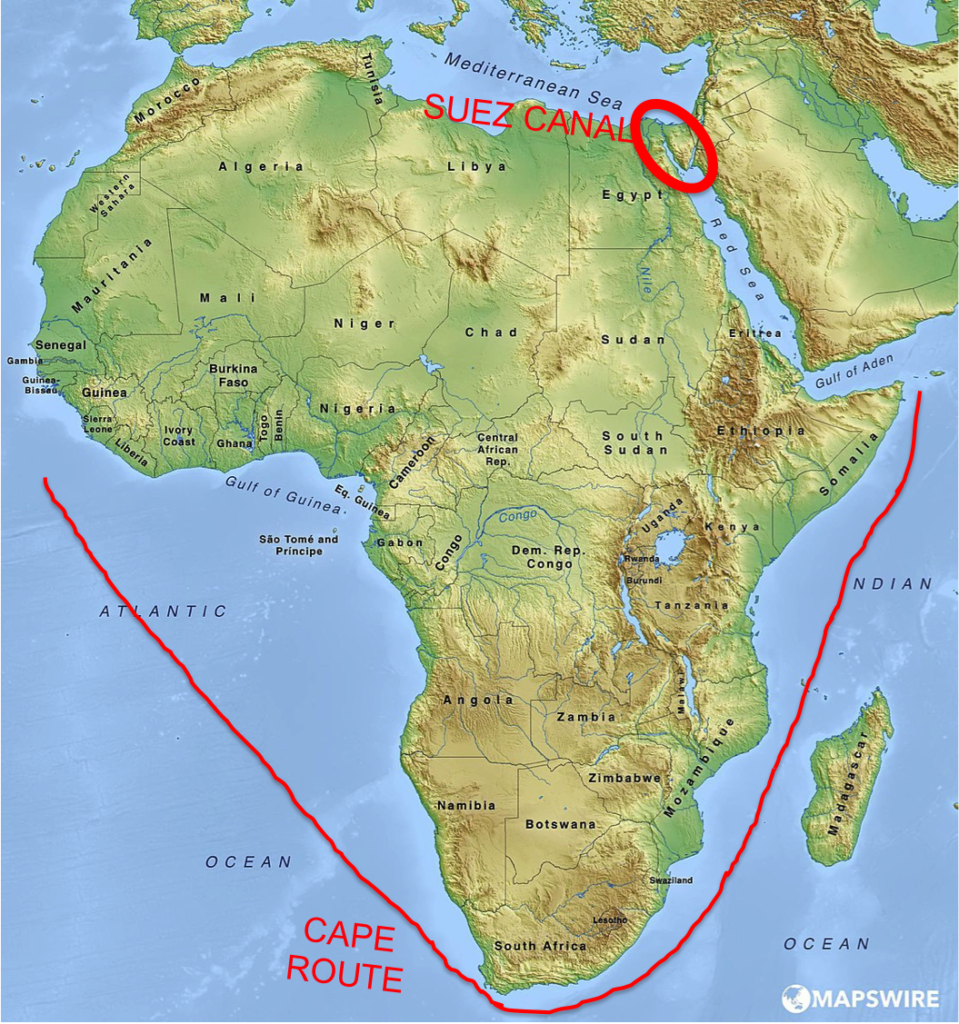
New Fee at the Ports of Los Angeles & Long Beach to Fund Zero Emissions Trucks
#9 Suez Canal Toll Increase
Sticking with fees, next on the list is a significant story for international shipping that got majorly overshadowed in 2022. This is an impactful cost increase in international shipping that affects not only U.S. importers but shippers around the world. It seems everything got more expensive in 2022 with out-of-control inflation, but freight rates actually went down. That will be talked about later, but decreased freight rates also helped bury the story of a toll hike at the Suez Canal.
A major toll increase at one of the top gateways for ocean freight shipping will impact international shipping moving forward. Thus, it managed to earn a spot on the top 10 list.
New Suez Toll Hike Significant for U.S. Importers
#8 Carriers Hit with Fines
For years, shippers have complained about unfair fees from carriers. Finally, there seems to be some momentum in curbing these as the FMC levied a fine against Hapag-Lloyd over unfair detention fees. 2022 also saw carriers get hit with price collusion fines (which is certainly something that has happened in previous years too). However, carriers seemed able to shrug off even millions in fees as over the pandemic, they made billions.
FMC Finally Acts on Unfair Fees with Hapag-Lloyd Fine
Carriers Fined Millions for Price Collusion Call Fines Insignificant as They Make Billions
#7 Blame Lies with Bad Government Policy Not Supply Chain
Those in charge of government policy pushed narratives that supply chain problems were causing the economic problems we’ve been seeing, inflation in particular. However, examining the causes of the supply chain crisis and inflation quickly make it clear that narrative was, and still is, a lie. Lockdowns and government stimuli were the biggest factors in surging shipping demand to levels ports and the supply chain couldn’t handle. Massive spending and money printing by the government has also been the biggest factor in pushing up inflation. The narrative of high freight rates causing inflation really fell apart when there wasn’t even correlation between rising and falling freight rates and inflation levels to try to support a causation argument.
High Ocean Freight Rates Are Not the Cause of Inflation
Government Making Supply Chain Crisis Worse
#6 AB 5 Goes Into Effect
The full implications of this story may not be known for quite some time. In 2022, California’s Assembly Bill 5 (AB 5) made it through legal challenges to go into effect. The bill basically makes the use of independent truckers illegal in California, forcing them to become employees of trucking companies or stop trucking in the state. This upends the trucking system in the supply chain, at least through California, where approximately 40% of U.S. imports enter the country through the Ports of Los Angeles and Long Beach alone and there are 70,000 independent truck owner-operators.
Trucker strikes and protests over AB 5 created some port disruption, particularly at the Port of Oakland. Trucking has become a bit more difficult in California, but there is still dispute happening over the bill and uncertainty on its enforcement. California tends to lean in the direction of overregulation, which has caused many businesses to leave the state. My expectation is AB 5 will be another net negative for the state, adding to the list of regulation that has turned out to be problematic. It would have been nice if AB 5 ended up #5 on this list, but it just missed it, landing at #6.
Port of Oakland Operating But AB 5 Supply Chain Threat Continues
Truckers, with ILWU Assist, Disrupt Port of Oakland Over AB 5
19 Legislators Call on Gov. Newsom to Stop AB 5 from Hurting Truckers & Supply Chain
Californian Law Attacks Truckers & Supply Chain
#5 Threat of Rail Strike
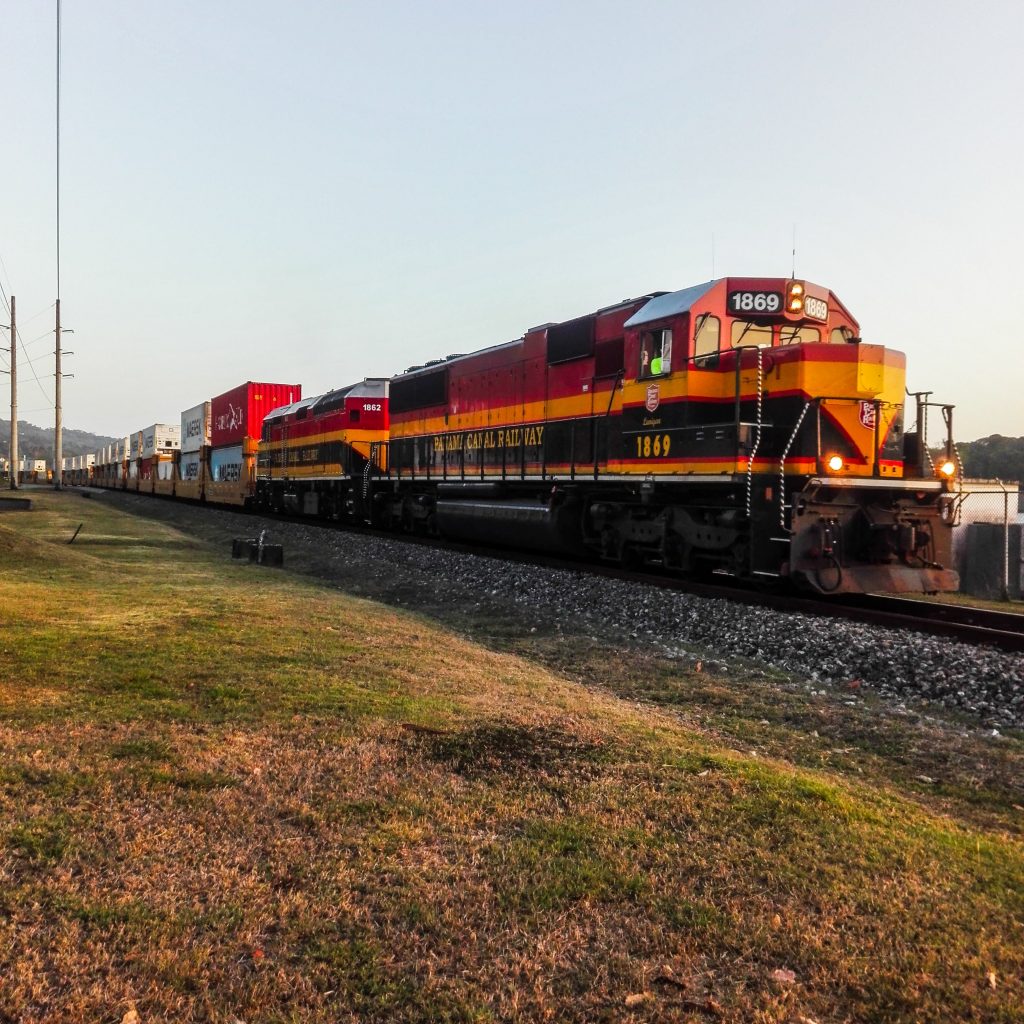
This storyline was high drama in international shipping news in 2022, and I believe it got more Universal Cargo blog posts than anything else this year. The U.S. faced a rail strike threat that would have screeched supply chains to a halt across the country. This storyline would have gone even higher on the list, except the rail strike never happened. Still, the threat was very real and narrowly avoided.
Rail Strike Averted as Senate Passes Bill & Biden Signs
House Acts to Avert Rail Strike That Would Halt U.S. Supply Chains
Rail Strike Watch: SMART-TD Rejects Tentative Labor Agreement
Rail Strike Watch: Another Union Rejects Tentative Labor Agreement
Rail Strike Watch: Potential Strike Pushed Back to December
7th Union Ratifies Rail Worker Deal, But Strike Threat Still Looms
November Rail Strike Looks Likely After Railroads Rejects Union Offer
Threat of Rail Strike Is Not Over
Railroads & Unions Reach Tentative Agreement Preventing Strike
Railroad Unions May Strike This Week w/ $2B-a-Day Consequences
Railroads Reach Deal w/ 3 Unions – More to Do to Avoid Strike
#4 Russia Ukraine Conflict Impacts Shipping
Russia invading Ukraine was obviously a huge news story in 2022. Of course, it would make it into the top international shipping news storylines of the year. Resulting embargoes as well as carrier decisions to remove services from Russia certainly impacted international shipping. China seemingly helping shippers get around sanctions on Russia also has significant political implications. It’s no surprise this storyline made it pretty high on the list.
The Russia and Ukraine War’s Impacts on Imports to the U.S.
Is China Helping Shippers Get Around Russian Sanctions?
What?! Russia/Ukraine Conflict Could Ease U.S. Port Congestion & Freight Rates?
Russia Invading Ukraine Likely Means Shippers Paying Even More for Their International Shipping
#3 Cargo Shipping Boom Ends and Rates Finally Fall
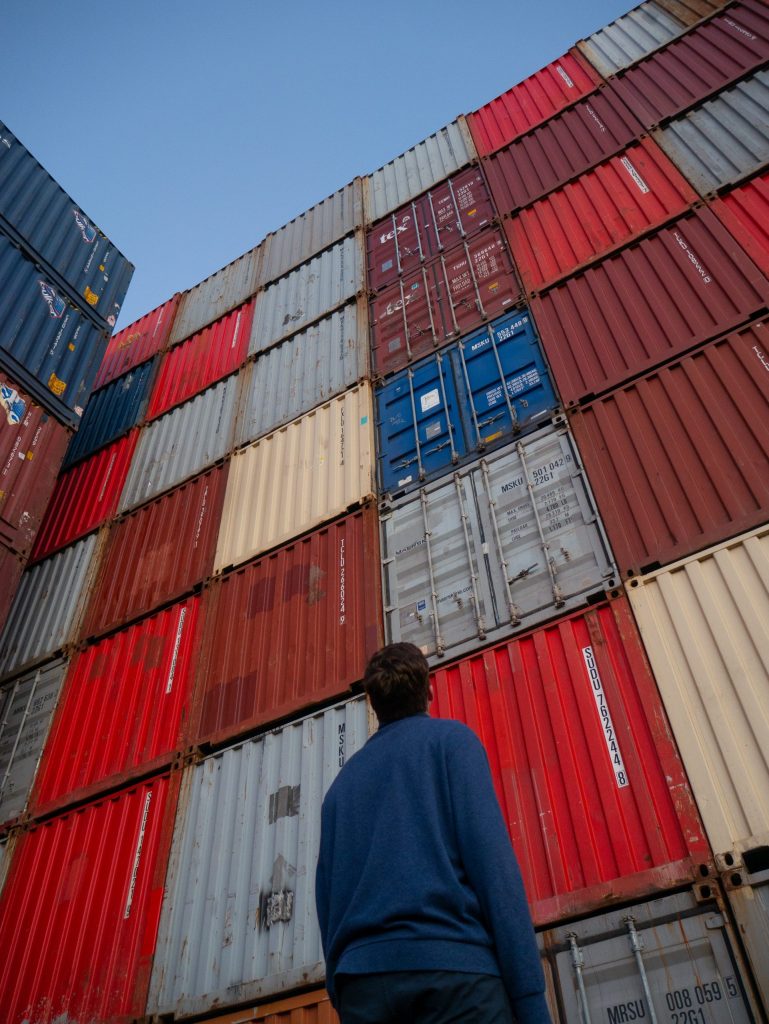
The international shipping boom finally ran out of steam in 2022. This is something I predicted as likely at the beginning of the year with soaring inflation helping to bring down shipping demand. With a fall in cargo volume came a fall in freight rates that even carrier alliances blanking (cancelling) sailings couldn’t stop.
With shipping demand and freight rates skyrocketing to record highs over the previous couple years, seeing those things come back to earth is a big deal, making the storyline of freight rates and demand a top three item on this year’s list.
What Does International Shipping Look Like for Importers Right Now?
Ocean Imports Drop, Trucking Jobs Plummet, Air Freight Peak Season Disappears
Freight Rates Down, Blank Sailings Up, Inflation – Yikes
Has the International Shipping Bubble Finally Popped?
Post-COVID Outlook on Ocean Shipping
Congestion, Delays, & Blank Sailings, Oh My
What’s Actually Happening with Freight Rates Right Now
Slowing Economy Should Lower Freight Rates But 3 Factors Could Keep Them High
Ports Get Congestion Relief But It May Be Only Momentary
Freight Rates Falling – But How Far & How Long?
2022 Supply Chain Outlook for U.S. Shippers
#2 ILWU Negotiations Stall & Turn Disruptive
Number two on the list is an international shipping news story that will continue on into the new year. International Longshore & Warehouse Union (ILWU) contract negotiations have a history of bringing disruption to West Coast ports. The current negotiations are no different.
Shippers diverted a great deal of cargo from West Coast ports to East and Gulf Coast ports in anticipation of the inevitable disruption of labor slowdowns that are now a traditional part of ILWU negotiations. That increased cargo to East and Gulf Coast ports brought some congestion there, but union actions at West Coast ports proved shippers right in diverting cargo.
The big issue that was expected to hold up and turn negotiations contentious was automation. However, the real issue that stalled negotiations was union jurisdiction, particularly a fight over jobs at the Port of Seattle’s Terminal 5 (T5). There is a relationship between this union jurisdiction fight and automation. The ILWU claims it conceded the Pacific Maritime Association (PMA) the right to automate for backing in all job jurisdiction fights it has with other unions. The union says the PMA has not followed through on this, claiming employers don’t even have the legitimate right for the automation already done at ports.
Negotiations don’t look even close to resolution six months after the ILWU master contract expired. Expect this to drag on for months into 2023.
Strap In Shippers: ILWU Contract Negotiations Look to Be Long & Bumpy Road
More ILWU Port Disruption & Terminals Cutting Man-Hours as Contentious Contract Negotiations Drag
ILWU Slows Oakland & Seattle Port Operations
ILWU Labor Action Occurs as Contract Negotiations Look Bad
ILWU Contract Negotiations Stalled Over Union Jurisdiction
ILWU Contract Negotiations Suspended
What’s Happening at Ports During ILWU Negotiations?
ILWU & PMA Speak About Contract Negotiations
Shippers Beg Biden to Help Make ILWU Contract Negotiations Go Smoothly
UH-OH – ILWU Contract Negotiations Suspended Till June
SHIPPERS BEWARE: ILWU & PMA Automation Fight Already Starting
#1 China’s Crazy Covid Zero Policy Hurting People & Supply Chain
When most of the world finally accepted the fact that lockdowns and shutdowns don’t help save lives from COVID-19, China continued these kinds of practices in the extreme. At the beginning of the year, it looked like the country might finally be letting up on its Covid Zero, or Zero-Covid, policy, but quickly it became apparent that was not the case. This ended up being a major story in both international shipping and human rights throughout the year.

The Chinese Communist Party (CCP) locked down whole cities, welding people into their apartment complexes, kicking others out of theirs to turn their homes into Covid camps, leaving people shouting from their balconies for a lack of food, arresting other people, and, of course, disrupting the supply chain.
People in China often showed resistance to these authoritarian acts of the CCP only to be met with violence. When people, who likely could have been saved if not for Covid Zero policy, died in a fire, outrage spread to massive protests, the size of which haven’t been seen since the Tiananmen Square massacre. China’s government did appear to pull back a little on the Covid Zero policy immediately after the massive protests, but only a little bit while the CCP deflected blame to local authorities for some of the outrageous actions perpetrated against its people.
It’s hard to imagine putting a storyline ahead of this one the list.
China’s Covid Zero Policies Worsen Supply Chain Problems
Shanghai Lockdown Not Really Over
WARNING: 4 Major Fallouts from China’s Contemptible Covid Zero Lockdowns
Shanghai Lockdown Causing Outrageous Disruption
It’s Time to Look at What China’s “Covid Zero” Really Is (with Videos)
Massive Chinese Lockdowns Present More Supply Chain Disruption
Perhaps China Is Loosening Its Insane Covid Zero Policies… a Little




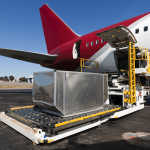
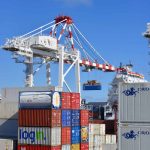
Where’s #1 of the Top Ten????